In the third instalment of a look around EFL League one’s best performers under 23, this week focuses on Doncaster Rovers midfielder Ben Sheaf. With 32 appearances and 2 goals, the on-loan Arsenal man has been a crucial part of manager Darren Moore’s first season at the club. Putting in consistent performances in a number of roles as part of a fluid system, Sheaf has developed with the exposure of first-team football to catch interest from sides higher up in the pyramid.
Coming to the end of his loan and now aged 22, Sheaf’s next move could really shape the start of a permanent career away from his EPL parent club. Another loan could be on the cards, but for his development, a more permanent move could give him the consistency to showcase his ability. However, there is no doubt that his season with Doncaster has put his name on the map, with newly-promoted Coventry City said to be a club keeping an eye on the technical midfielder.
In this tactical analysis, we will look closer at what has caught the eye around Britain and how he fits within Moore’s tactics at Doncaster.
Sheaf’s Role
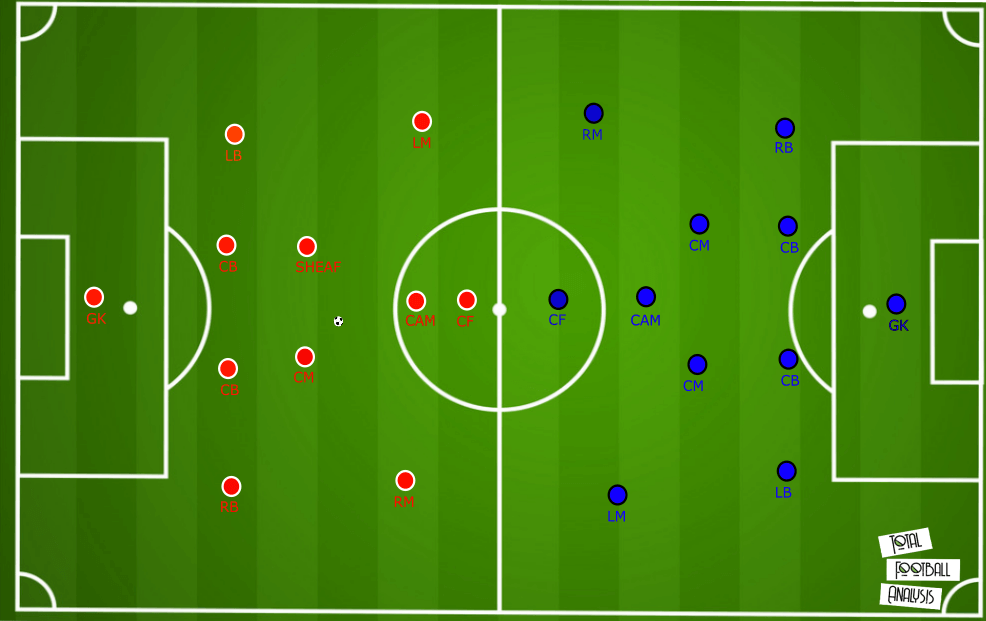
Moore has looked to use different versions of the 4-2-3-1 and 4-3-3 with a high number of rotations centrally. Sheaf has operated as one of the pivots in a midfield two, as shown above, or on the left side of a midfield three. In a two, Sheaf has been on the highest number of occasions partnered with Ben Whiteman, with an emphasis on working on opposite lines to give an extra option in the final third as well as cover and balance.
In possession, Sheaf operates as a crucial part of how Doncaster play out from the back. At first staying high to stretch the opposition midfield, before dropping down into unoccupied space in front of the back four. Receiving from either the centre-backs or the goalkeeper, Sheaf is able to receive under pressure, looking to find teammates on higher lines with progressive passes. A lot of what Doncaster do goes through Sheaf. With 57.88 passes per 90, Sheaf shows the third highest in the division for his position, with the same ranking for passing accuracy at 85.9%. A key concept, of which we will discuss later in this scout report, is that Sheaf operates as Doncaster’s metronome in midfield, looking forward when possible and not afraid to go over, penetrating space left behind.
Out of possession, Sheaf looks for specific triggers where Doncaster look to counter-press their opponent in high areas, preventing forward passes where possible. Sheaf looks to press in the oppositions’ third, before then recovering and getting a solid central shape early. In the double pivot, Sheaf and his partner often work with a presser and cover, operating clear 2 v 2 defensive principles to show the opponent outside. What Sheaf has shown is this is a trait that he has added to his game, with a high number of defensive duels and interceptions this season, another concept we will come onto.
Positional Fluidity
As mentioned, with differing systems Sheaf has had to show his versatility, operating in both a two- and three-man midfield. However, the key core principles remain, with an emphasis on vertical rotations into higher areas to receive beyond. As well as dropping deeper into areas in front of the back four to receive. Let’s take a look at some of these principles in action.
In this first example, Sheaf picks up a higher position, with Whiteman operating on a lower line in the holding role. Sheaf moves beyond the oppositions midfield line to receive at an angle from the wide player in possession. With this rotation high, Doncaster’s midfield moves from a point up 2-1, to a point down 1-2 midfield three. As the move progresses, Sheaf moves into the gap in between to receive in between the lines.

What is important and so effective here from Sheaf is his positional awareness and understanding. As he is dropping in, Sheaf is constantly checking his shoulder to recognise the picture in front of him upon gaining possession. He then checks behind to scan for pressure from behind, before showing with an open body shape to receive on his back foot, with his first touch being positive towards the opponent’s goal. The importance of Sheaf to understand the picture in front allows him to make quick decisions, with no hesitation to scan after receiving.
Sheaf’s understanding within the rotations for Doncaster is important to not only create space for himself but for his teammates. With this progression through the third is much easier and opposition find it difficult to press Doncaster in their own defensive third. In this next example, Sheaf looks to move into a higher position, dragging the opponent with him. This movement is so important for two reasons, and given the rotations, a higher number of opponents have used man-for-man marking centrally to nullify this principle.
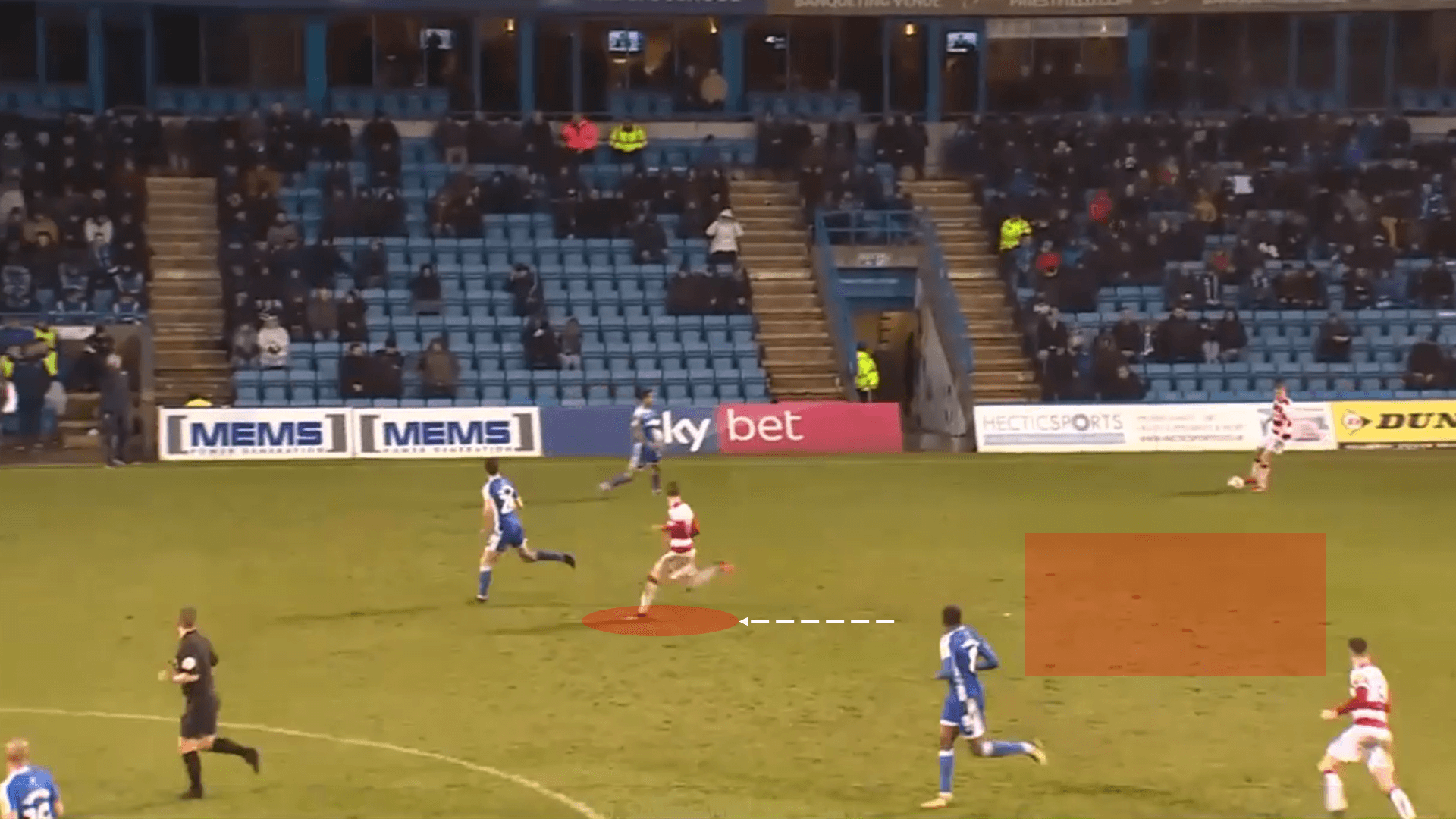
First, with this movement, Sheaf opens up space for Whiteman to slide horizontally across to receive from the full-back, completing the rotation. Second, Sheaf moves higher to forces the opponent out of the space to then check back sharply and drops down with a side-on shape to receive with less pressure around, allowing Sheaf to play forward quicker. In this instance, Sheaf’s sharp movement loses the opponent allowing him to receive with Doncaster able to progress to a higher line centrally, given the wide channel is blocked from the opponent’s approach to the man in possession.
These principles are especially important given Moore’s desire to ask his side to play out from the back. This next example below looks at an instance where Sheaf is heavily involved. With Doncaster splitting their centre-backs, this also encourages the opponents forwards to step on and mark, providing a large amount of space in front of the penalty area. With the double pivot, both midfielders have to be clever about their movement, with both dropping in reducing option nearby, but creating far or one dropping in, reducing the numbers in deep if a mistake is made.

Sheaf drops in to receive, without slowing down and stopping, and this makes it difficult for the opponent to mark him and prevent his side from getting out. Receiving on the move, Sheaf drops down in an anti-clockwise rotation, which allows him to receive on his stronger right foot, further away from the pressing player from behind. Sheaf can, therefore, receive from the goalkeeper rather than the centre-back, in more space given the setup of Doncaster. The timing of Sheaf’s run is crucial to the space and time he has as well as the confidence and composure to receive facing his own goal to play forwards under pressure over or through the opponent’s press.
Passing Metronome
Showing the intelligence to get into positions to play forward is one part of Sheaf’s game but being able to execute the pass has been an area that has really impressed. As shown in the graphic below, Sheaf completes a high number of progressive passes from deep positions, with an emphasis on the wider channel and inside channel of the penalty area.
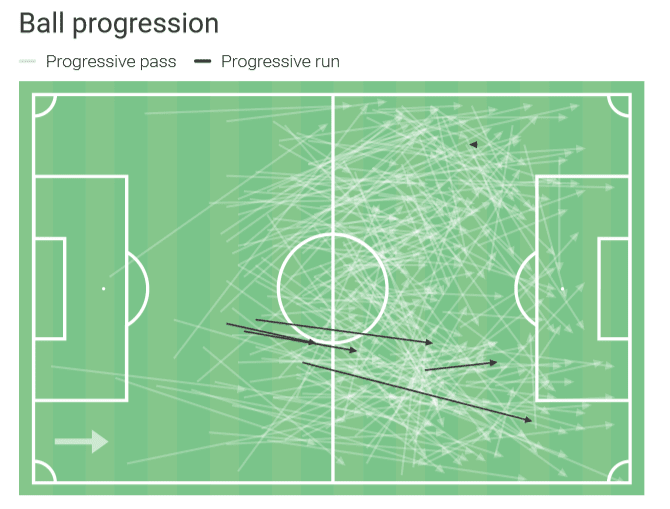
In fact, Sheaf is able to complete 78% of his progressive passes, of which he does 10.9 times per 90, ranking fourth-highest in the division for his position. Operating in a central position, Sheaf has the ability to play in a quarter-back-like role, to dictate the tempo of his side, finding teammate on higher lines in a dangerous position in behind or in between. Sheaf shows that he isn’t a negative passer, with 21.37 forward passes per 90, the highest in the division for a player his age, at a success of 78.09%.
Of course, it can be argued that operating from a deeper position, the majority of Sheaf’s passes are going to be forward given his start position. However, as was mentioned before Sheaf operates on higher lines given his rotations and therefore also attempts forward passes from much more difficult positions. This first example highlights this, with Sheaf picking up the ball from the wide channel, he looks for a first time pass into the forward’s feet on the edge of the area.
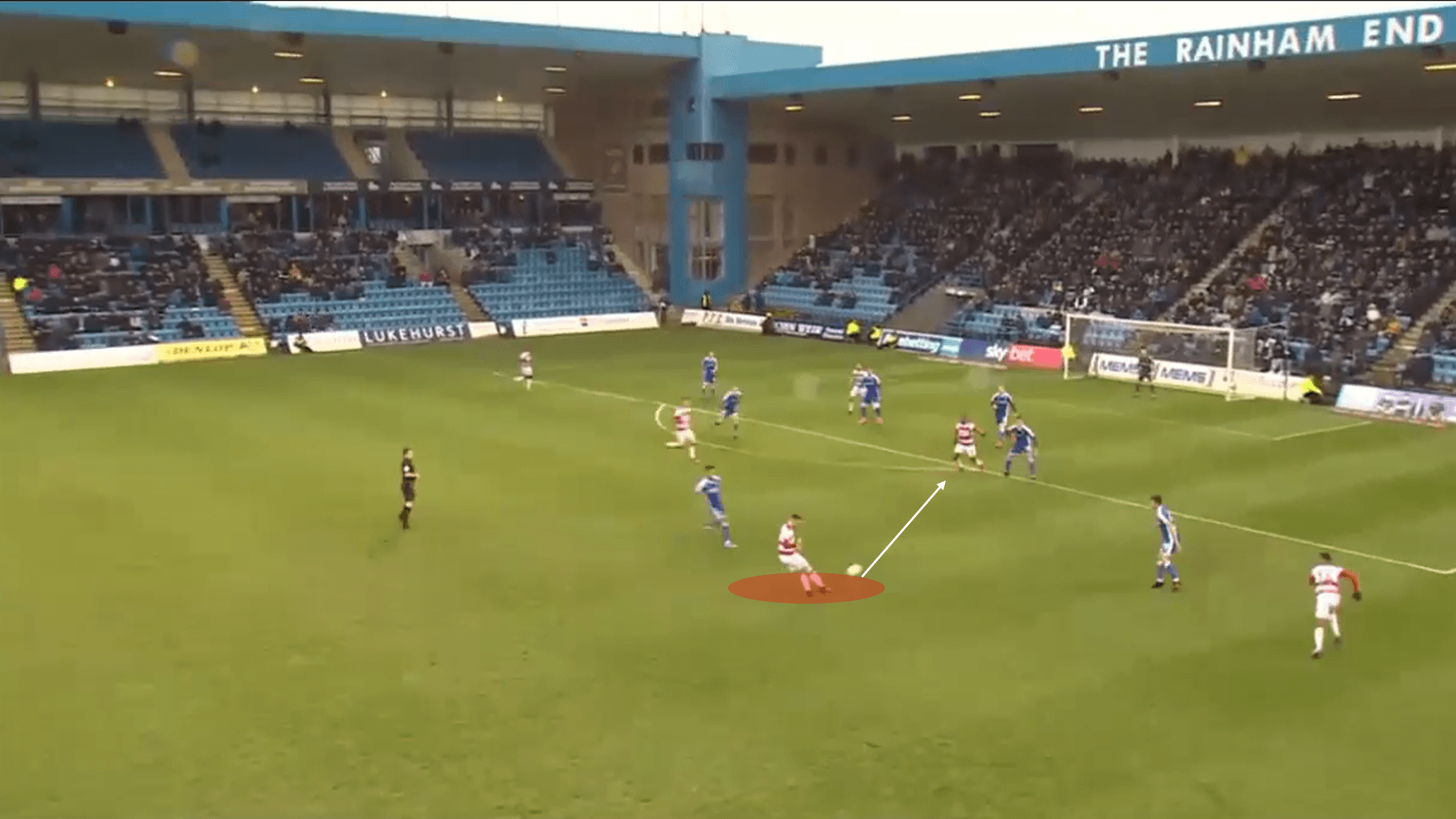
Given the importance of effective scanning, Sheaf is able to know where his teammate is making his move to. As well Sheaf shows his intelligence to fire the pass at pact towards his teammate’s right foot, furthest from his opponent, giving him the advantage to maintain possession. By arriving late to the position, the opposition midfielder has little time to react and close Sheaf down, or block of the passing lane into the forward. Sheaf also uses the run in the wide-area as a decoy to create more space for himself as well as shape up to play into space, to then cut the ball into the forward.
Sheaf’s passing range is clear to see in his statistics. Sheaf shows 1.15 deep completions per 90, fifth-highest for his age, with 2.21 finding the penalty area at a success of 75.5%. However, it’s the consistent basis Sheaf finds the final third with his passes that’s impressive. With 9.96 final third passes per 90, this ranks Sheaf third highest in the division for his position, as well as 75.5% accuracy ranking fifth-highest.
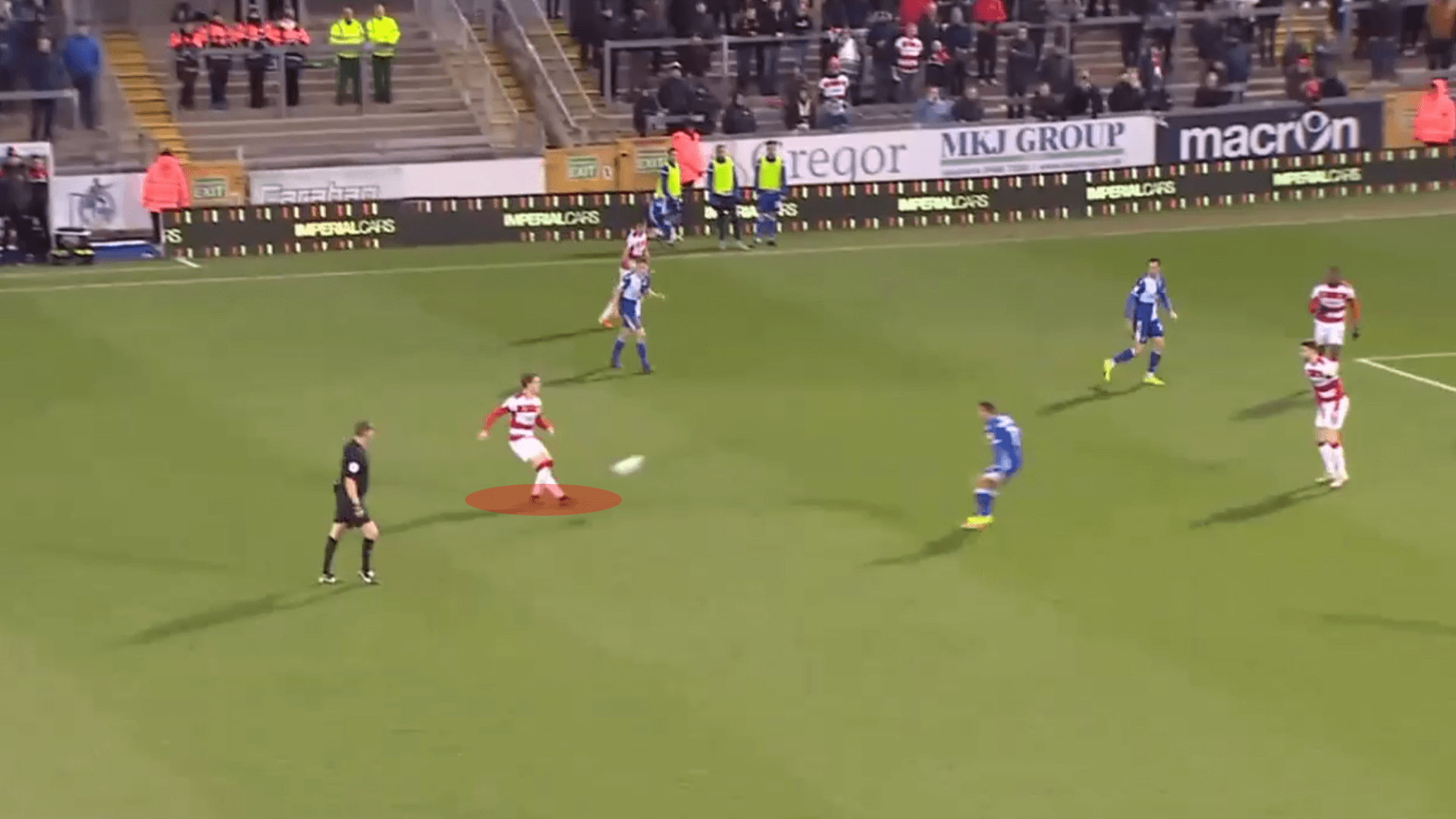
The intelligence of such a pass is the recognition of the opponent’s movement. With Sheaf setting himself up to switch the move to the right, he cuts under the ball at a sharp angle to play into the ball-near channel. The opponent looks to shuffle to their left, expecting the switch and Sheaf’s pass is played into a larger gap than usual.
Sheaf’s weight of pass must not go unnoticed, with his ability to find movement in behind with ease. His passes are often played superbly in front of his teammate allowing their first touch to be positive. This next example below showcases such skill. With Sheaf this time in a deeper position, his ability on the ball caused a misunderstanding centrally with the opponent not applying a full committed press, worrying about the space in behind.
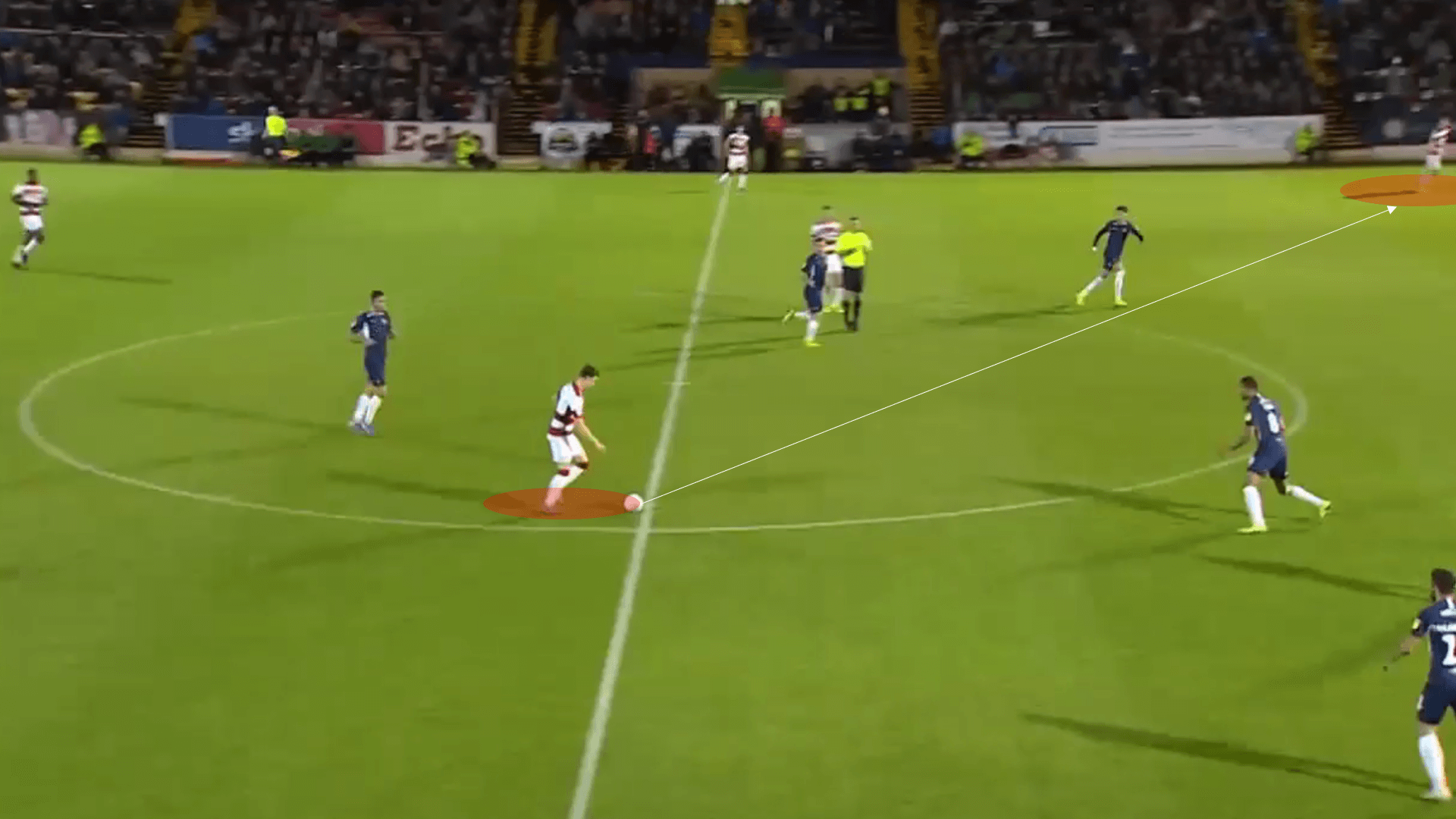
Sheaf is therefore provided more time to pick out a diagonal forward pass into the advancing winger who has made a movement in behind the opponent’s right full-back. Sheaf’s range of passing allows him to pick up deeper positions and play into attacking areas as well as operate the higher position himself and play into teammates’ feet. With this intelligence to understand not only his role but also how he can be a real danger, highlights the exact reasons why there is interest from above.
Defensive bite
However, Sheaf has also shown his defensive capabilities within his role for Doncaster. Being able to compete effectively in both parts of the game has been really impressive, with this graphic below highlighting his high involvement in counter-pressing and interceptions.
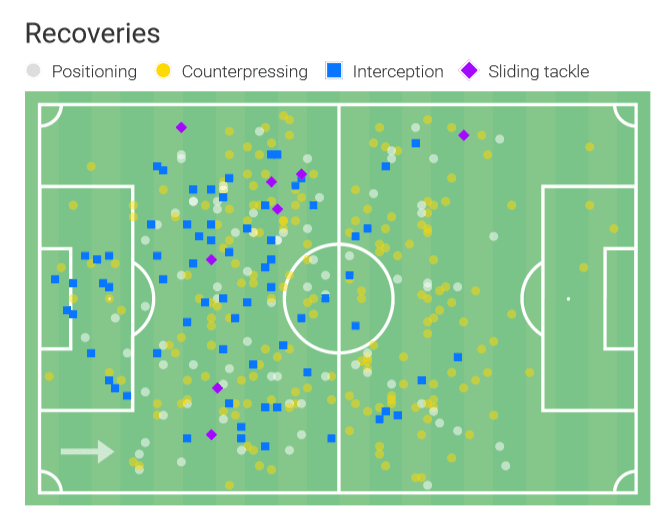
With 6.1 interceptions per 90, this ranks Sheaf as fourth-highest for players his age, with a similar ranking for possession adjusted interceptions at 8.26. What is important to highlight is the number of interceptions in front of the back four towards the left inside the vertical channel, a position where Sheaf would be expected to cover given his positional role. As well as this is the high number of counter-pressing actions Sheaf completes in the middle third, With the majority in an area close to the opponent’s midfield line to start an attack.
Such counter-pressing actions can be seen in the example below. Sheaf recognises a sideways pass of the opponent as a trigger to step out of his defensive line to press. With the other pivot, Whiteman having just pressed, Sheaf applies simple 2 v 2 defensive principles to press while his partner gives cover and balance. When the receiver is in possession, Sheaf looks to force him backwards allowing no turn to play forwards.
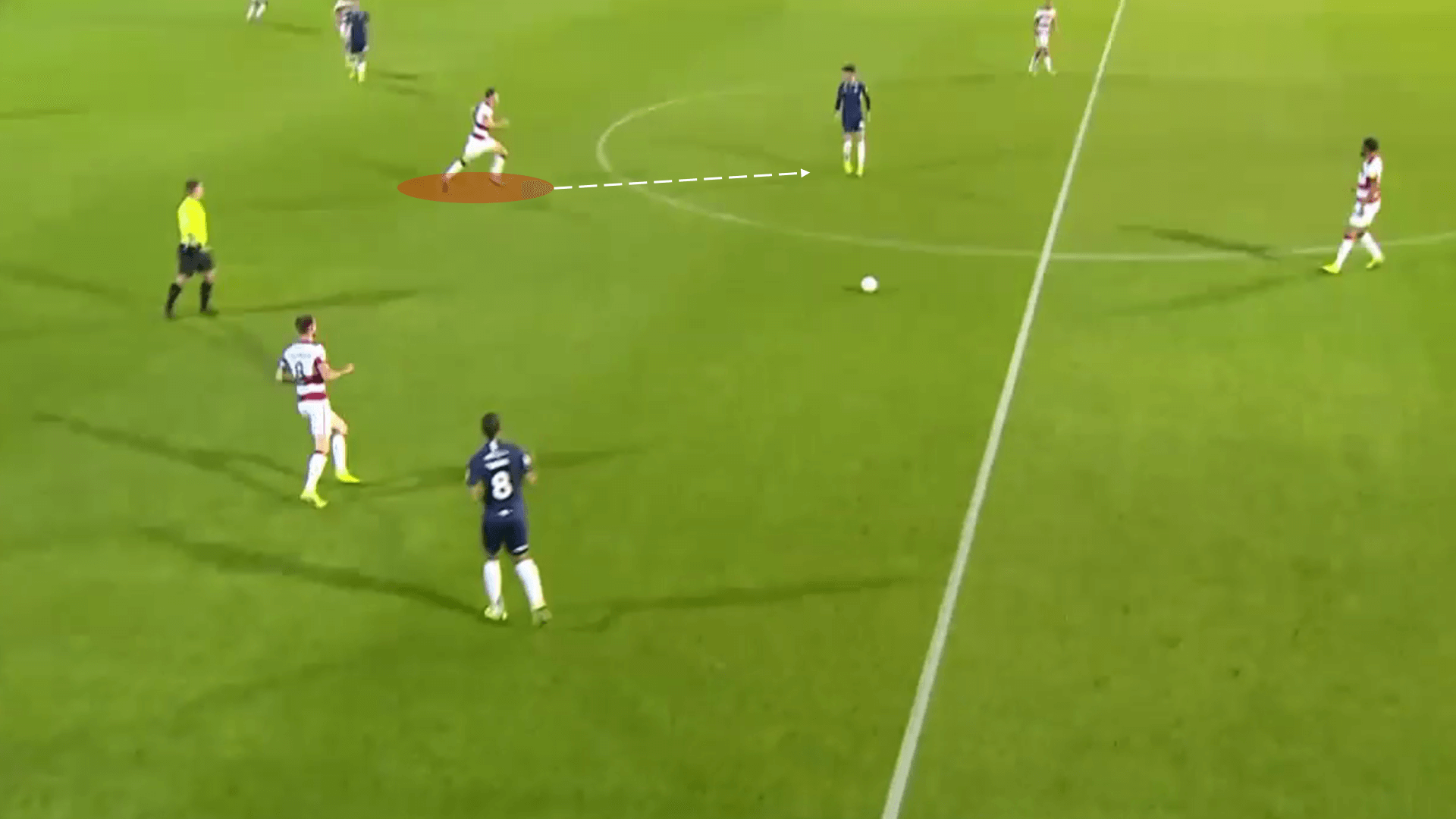
The importance to recognise the trigger and when to press has clearly been an important part of Sheaf’s defensive bite, allowing him to win possession from a higher position, with teammates in close proximity to progress possession to. The press is with intensity and eagerness in the central channel to force the opponent around, rather than through. Sheaf has clearly excelled in this role, with the highest successful defends per 90 at 13.16 in the division for players of his age and position.
The final example below highlights these pressing principles once the first line has been broken. With the opponent having passed through Doncaster’s first line of the press, Sheaf steps on late to press with intensity in the central channel. Sheaf recognises the opponent is unbalanced and can press higher with the balance provided from deep. Sheaf looks to regain possession, a defensive action he has done so at an average of 9.86 per 90 with a success of 63.2%.

Sheaf is able to prevent the forward pass, but also win possession with momentum closer to the opponent goal, with teammates in higher positions to be found behind recovering defenders. Sheaf’s ability to not only dominate on the ball for his side but also show a defensive bit, especially within the central channel is a key aspect as to why so much interest has come his way. A young midfielder who can compete on both aspects of the game at a higher level would make him a safe permanent purchase for any second-tier side, assuming Arsenal allow him to leave.
Conclusion
Links to the Championship will make returning to Doncaster unlikely, but with the right move, Sheaf is sure to shine in a role that takes advantage of his technical capabilities. This analysis has shown how Sheaf’s versatility makes him an attractive signing and for a cheap price, with likely a permanent switch to break the mould of back to back loans.
Sheaf’s impressive stat this season have certainly not gone unnoticed by some, and fitting his qualities as mentioned to a possession-based side, should be a match made in heaven. Sheaf doesn’t only show his ability to go forward, adding defensive steel to his repertoire. Sheaf has certainly been a standout player for Moore’s side this season, of which it looks to have earned him a move that is a step closer to the top.






Comments